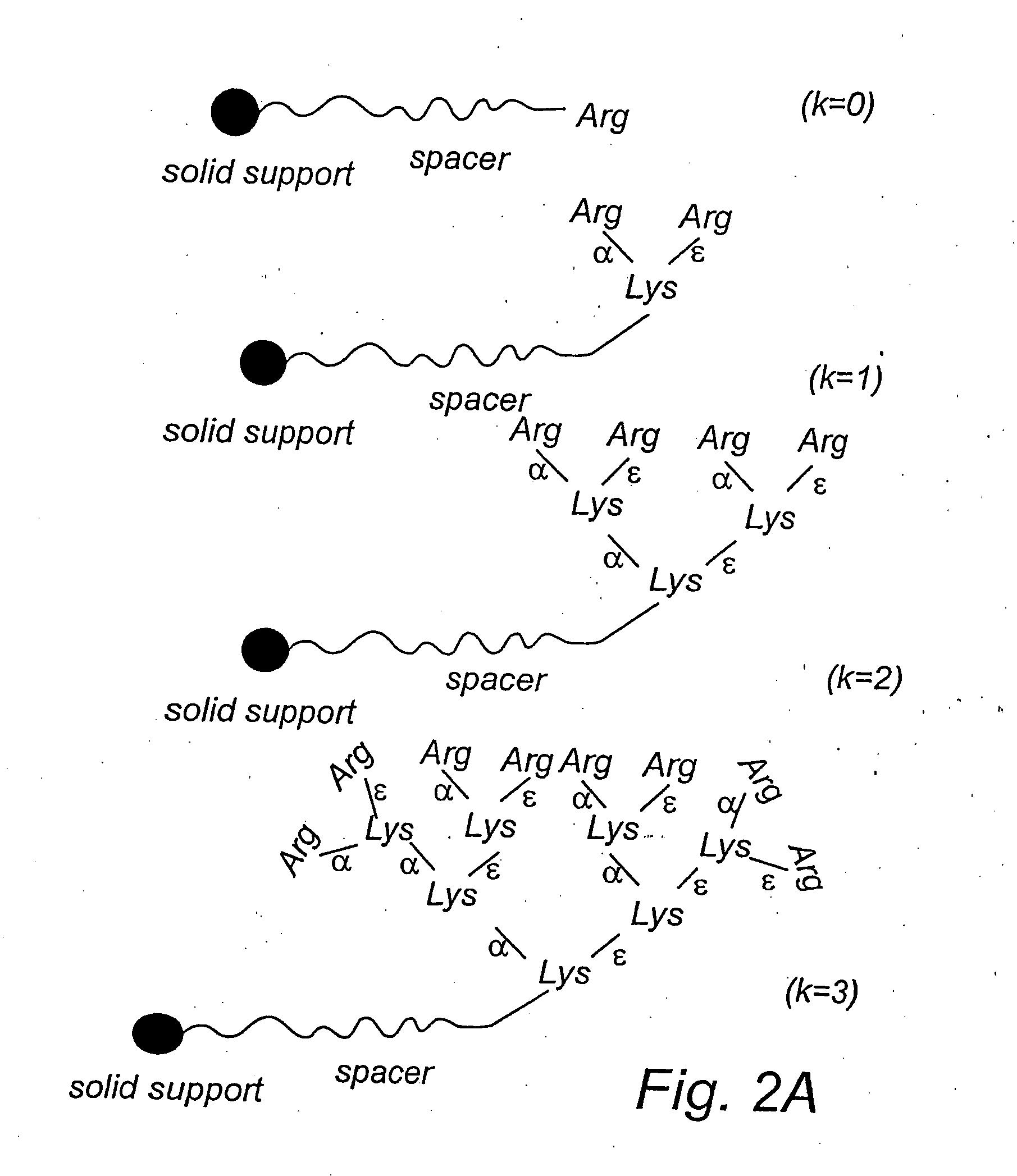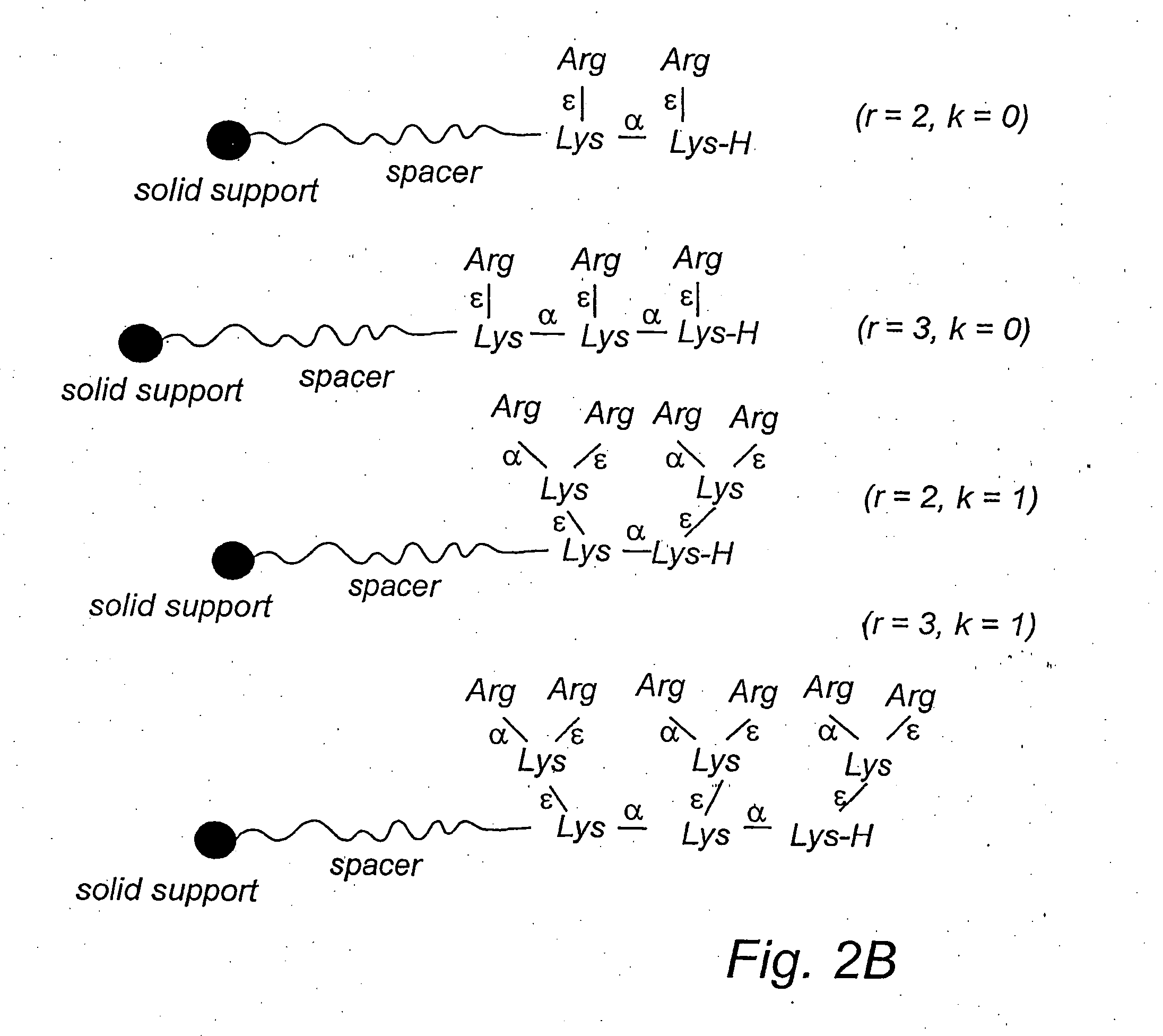Polymer affinity matrix, a method for the production and use thereof
a technology of polymer affinity matrix and affinity matrix, which is applied in the direction of instruments, peptide/protein ingredients, other chemical processes, etc., can solve the problems of multiple organ failure, tissue damage, and subsequent life-threatening complications of patients, and achieve the effects of reducing the risk of sepsis
- Summary
- Abstract
- Description
- Claims
- Application Information
AI Technical Summary
Benefits of technology
Problems solved by technology
Method used
Image
Examples
example 1
Design of the Ligand Containing a Binding Unit for LPS
[0174] This example describes, without limiting the invention, the design of a ligand containing a binding unit for the removal of LPS.
Principle
[0175] An efficient removal of toxins, e.g. LPS, requires a ligand with a binding unit that is complementary to the binding motif of the substance to be removed. This includes a three-dimensional aspect of the substance to be removed and a precise arrangement of molecules to optimise a biospecific recognition with characteristics like complementary charges, hydrophobicity and hydrophilicity. This, together with appropriate distances of the aforementioned characteristics, will complete the ligand with its binding unit. Also, the total three-dimensional presentation of such a ligand within a polymer matrix should be optimal in space for a high perfusion, ligand presentation and flexibility of the ligand. Still, a high biocompatibility is a prerequisite for in or ex vivo blood purificat...
example 2
Comparison of Branched and Linear Ligands
[0178] This example describes the adsorption of the endotoxin LPS from human plasma. The example also shows a comparison between linear and branched ligands for the adsorption of the endotoxin.
Principle
[0179] Beads are incubated with heparinised human plasma for a time period of two hours. The endotoxin levels are determined after two hours of incubation using an LAL assay.
Material
[0180] The following beads are used:
PS-PEG-LBP 94-108endotoxin-binding sequencefrom LBP, linearPS-PEG-BPI 85-99endotoxin-binding sequencefrom BPI, linearPS-PEG-Arg88-fold branched containingargininePS-PEG-NH-Acacetylated base-material ascontrolNo beadsControl
Procedure
[0181] Incubation of beads in heparinised plasma is carried out at 37° C. Samples are slowly agitated and beads are removed by centrifugation after an incubation period of two hours.
Analysis
[0182] An LAL assay is performed to quantitate the levels of endotoxins after the incubation with b...
example 3
Kinetics of Endotoxin Binding
[0185] This example shows the kinetics of endotoxin binding when beads with a three-dimensional matrix, optimised for LPS binding, are incubated with plasma and analysed at different points of time.
Principle
[0186] The kinetics of absorption is dependent on the structure and the degree of cross-linking of the polymer matrix. Beads are incubated with heparinised human plasma. After 1, 10, and 120 minutes samples are withdrawn. The endotoxin levels are determined using an LAL assay.
Material
[0187] The following beads are used:
PS-PEG-Arg88-fold branched containingargininePS-PEG-Arg44-fold branched containingargininePS-PEG-Arglinear containing argininePS-PEG-NH-Acacetylated base material(-Ref)
Procedure
[0188] Incubation of beads in heparinised plasma is carried out at 37° C. Samples are slowly agitated and test samples are withdrawn after an incubation period of 1, 10, 120 minutes. Beads are removed by centrifugation.
Analysis
[0189] An LAL assay i...
PUM
| Property | Measurement | Unit |
|---|---|---|
| average molecular weight | aaaaa | aaaaa |
| time | aaaaa | aaaaa |
| average molecular weight | aaaaa | aaaaa |
Abstract
Description
Claims
Application Information
 Login to View More
Login to View More - R&D
- Intellectual Property
- Life Sciences
- Materials
- Tech Scout
- Unparalleled Data Quality
- Higher Quality Content
- 60% Fewer Hallucinations
Browse by: Latest US Patents, China's latest patents, Technical Efficacy Thesaurus, Application Domain, Technology Topic, Popular Technical Reports.
© 2025 PatSnap. All rights reserved.Legal|Privacy policy|Modern Slavery Act Transparency Statement|Sitemap|About US| Contact US: help@patsnap.com



